Inventions
Carl Bohland’s Auto Wash Bowl
Carl Bohland patented the auto wash bowl in 1921. His idea was that cars would drive into a large, concrete bowl filled with water. After a couple of times around the bowl, the cars would be clean. Or, at least, cleaner.

Bohland managed to open a few auto wash bowls. The problem, however, was that his technique only really cleaned the underside of the cars. This was useful back in the days when many roads were still unpaved and their undersides constantly got filthy. But as road conditions improved, the auto wash bowl became less useful. By the 1930s, the last one had closed.
More info: vintag.es
Posted By: Alex - Sun Oct 11, 2020 -
Comments (5)
Category: Inventions, Patents, 1920s, Cars
The 1932 Helicron
Propellor-driven car.Read about it here.
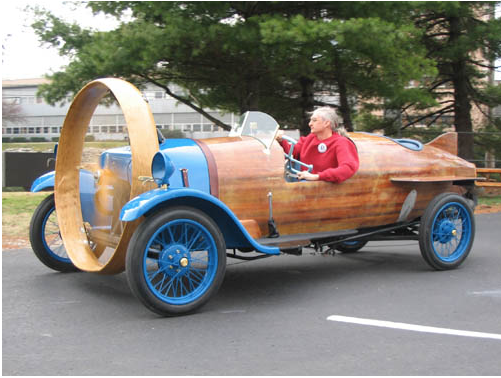
Posted By: Paul - Mon Oct 05, 2020 -
Comments (3)
Category: Inventions, Air Travel and Airlines, 1930s, Cars
Disease detection toilet using dog
Patent #10,455,817 was granted in Oct 2019 for "animal olfactory detection of disease as control for health metrics collected by medical toilet."In plainer language, it's a toilet that has a small door built into the side of it (the "scent dispenser"), allowing a dog to smell your poop (or other bodily fluids) in order to detect the presence of disease. From the patent:
An animal may be trained to sniff the scent dispenser in response to a command or signal. The user may give the animal the command or signal when the user desires the animal to assess the presence of disease in the user.
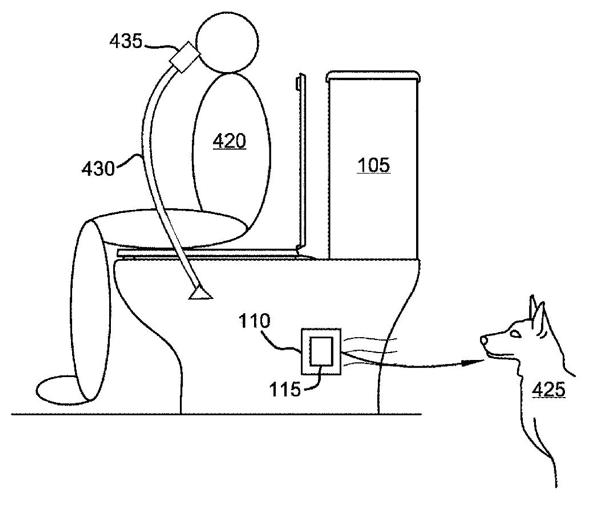
Posted By: Alex - Sun Oct 04, 2020 -
Comments (2)
Category: Bathrooms, Inventions, Patents, Dogs
Health Jolting Chair
Oliver Halsted was granted a patent for an "exercising machine" in 1844. It was later marketed as the Health Jolting Chair. AKA the "wake-up chair." By pulling the levers on the side, it would bounce up and down. It was said to be a panacea for "dyspepsia, liver complaint, low spirits, general debility, constipation, 'so-called malaria,' jaundice, melancholia, and anemia."
Image source: Natl Lib of Medicine
Posted By: Alex - Sun Sep 27, 2020 -
Comments (0)
Category: Exercise and Fitness, Health, Inventions, Patents, Nineteenth Century
Subjective Color
July 25, 1967: During its broadcast of the TV series Combat!, ABC aired a commercial for a soft-drink called Squirt. The commercial appeared in color. What made this unusual is that it appeared in color even on black-and-white TV sets.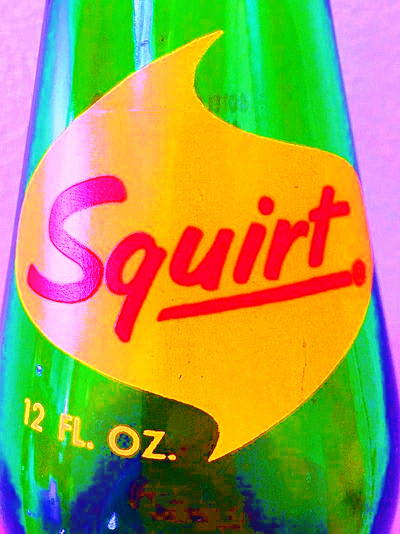
The commercial used a technology developed by the Color-Tel Corp., and patented by James Butterfield, that used pulses of light to trick the brain into thinking that it was seeing color. Butterfield described this as "subjective color".
The company had informed the media before the broadcast, but most people didn't know it was going to happen, and so they thought they were going nuts when they suddenly saw flashes of color on their black-and-white sets.
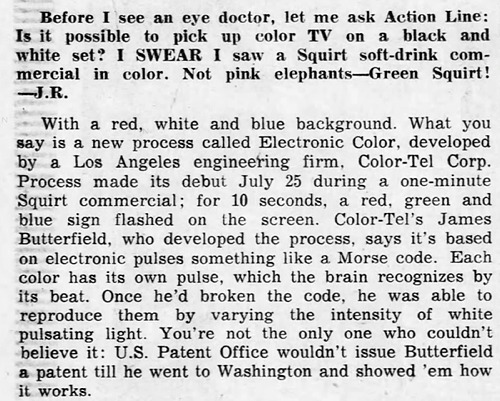
Detroit Free Press - Sep 14, 1967
The technology had some limitations. It could only be used for still images. Also, the colors were muted and flickered a lot. But the really big problem was that the technology emerged just as color TVs were becoming popular. So it was a clever gimmick that no longer had much practical purpose.
More info: Chronicles from the Analog Age Blog
Also worth noting: the idea of being able to see color images on a black-and-white set was the premise of a famous April Fool's Day hoax that occurred in 1962 in Sweden.
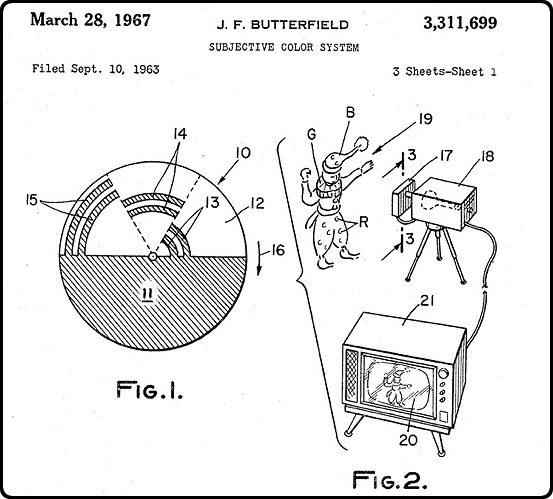
Posted By: Alex - Sun Sep 20, 2020 -
Comments (0)
Category: Inventions, Patents, Television, 1960s
Aroma Discs
Donald Spector received a patent for these in 1985. They looked like small music discs. But instead of producing sound, they released an aromatic vapor when put in the 'player'.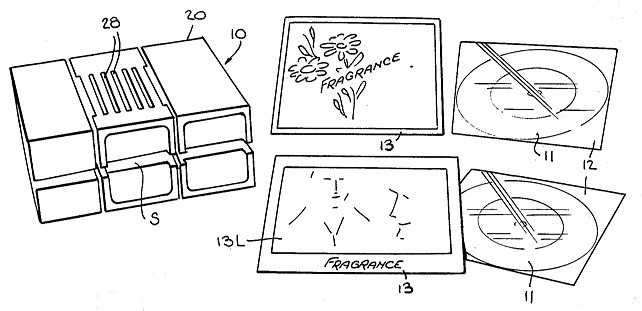
I don't see what advantage an aroma disc would have over an incense candle (except, perhaps, for the lack of an open flame). Which, I assume, is why these are no longer around and incense candles are all over the place.
But Spector was successful enough to have his product featured on The Tonight Show with Johnny Carson:
Posted By: Alex - Sun Sep 06, 2020 -
Comments (3)
Category: Inventions, Patents, 1980s, Perfume and Cologne and Other Scents
Steam-Powered Motorcycle
What happens in a crash that splits the boiler open?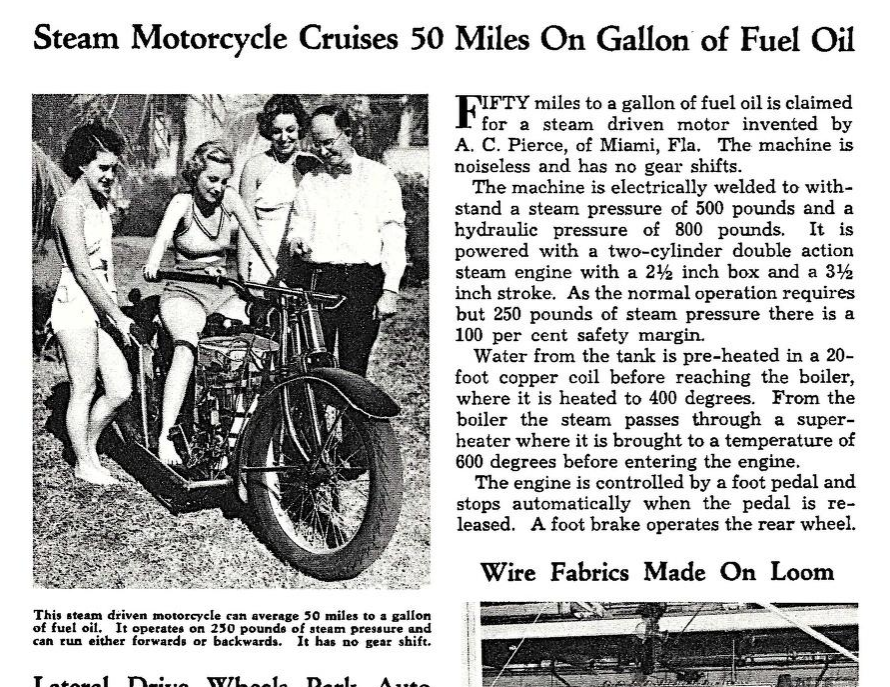
Source.
Posted By: Paul - Mon Aug 31, 2020 -
Comments (4)
Category: Death, Inventions, 1930s, Motorcycles
The Human Performance Enhancing Robot of Dr. NakaMats
AKA Cerebrex. Invented by Dr. Yoshiro NaKaMats. It was essentially a lounger chair that was supposed to improve brain function in only 30 minutes. Details from the Arizona Republic (Sep 12, 1986):Meanwhile, customers can use it only in his sun-flooded "oyasumidokoro," or sleeping place, a nearly empty room a few floors below his laboratory, where white-coated assistants bustle around prototypes of industrial robots in various stages of development.
The inventor explains how the chair works, sort of.
"It activates your alpha brain waves by emitting ultra-high frequency electronic pulses, which in turn increase the flow of blood to the head, through the chair's pillow and foot rest," he said.

York Dispatch - July 2, 1986
You can check out a (non-embeddable) video about Cerebrex on Vimeo.
Posted By: Alex - Fri Aug 21, 2020 -
Comments (5)
Category: Inventions, 1980s, Brain
Hand Taser, 1935
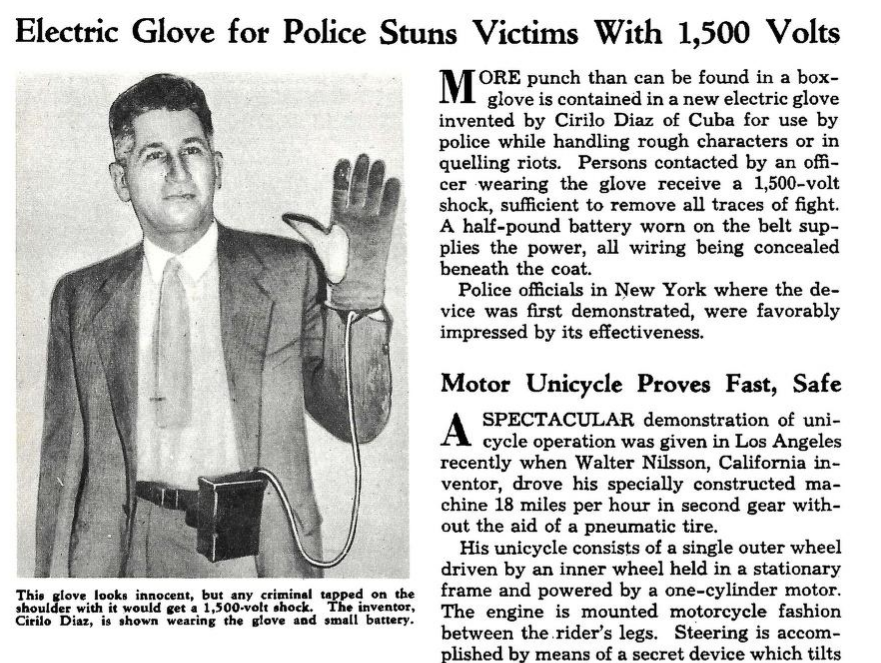
Source.
Posted By: Paul - Fri Aug 21, 2020 -
Comments (1)
Category: Crime, Inventions, Police and Other Law Enforcement, Technology, 1930s
Das Bockwurstklavier
Or, the sausage piano.It was created using a gadget called Makey Makey, that allows you to turn just about any food (bananas, watermelons, etc.) into a keyboard. Amazon Link


Posted By: Alex - Thu Aug 13, 2020 -
Comments (1)
Category: Inventions, Music

| Who We Are |
|---|
| Alex Boese Alex is the creator and curator of the Museum of Hoaxes. He's also the author of various weird, non-fiction, science-themed books such as Elephants on Acid and Psychedelic Apes. Paul Di Filippo Paul has been paid to put weird ideas into fictional form for over thirty years, in his career as a noted science fiction writer. He has recently begun blogging on many curious topics with three fellow writers at The Inferior 4+1. Contact Us |




